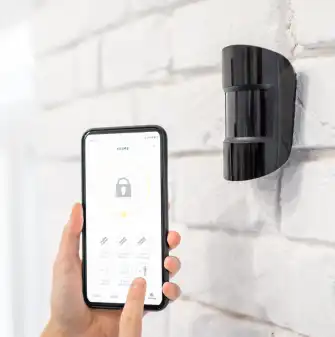Mr. Handyman has been helping homeowners repair, maintain, and enhance their spaces for over 25 years! We are the one-stop solution for everything on your to-do list. This includes answering your questions about home repairs, maintenance, and improvements. Here are answers to some of your most frequently asked questions about motion sensor lighting installation.
What are the benefits of installing motion sensor lights at home?
Motion sensor lights automatically illuminate when they detect movement, making them ideal for deterring intruders, ensuring safe navigation in dark areas, and conserving energy by only activating when needed.
Whether placed near entryways, walkways, or backyards, motion sensor lights eliminate the need to fumble for switches, reduce electricity waste, and provide peace of mind. Simple to install and highly effective, they’re a smart, modern upgrade for any homeowner looking to enhance safety and efficiency.
Can motion sensor lights be installed indoors?
Motion sensor lights can be installed indoors, and they’re incredibly useful in many areas of your home. Think about spaces like hallways, closets, basements, or even bathrooms—anywhere you might need quick, hands-free lighting. They’re great for saving energy since the lights only turn on when someone enters the room, and they’re especially handy if you’re carrying groceries or dealing with sleepy kids in the middle of the night. With a little planning, motion sensor light installation can make your indoor spaces more convenient.
What is the best location for outdoor motion sensor lights?
Install them near entry points like front doors, back doors, and garage doors to light up the area when someone approaches. Walkways and driveways are also smart choices to ensure safe navigation at night. Motion sensor light switches are especially effective around dark corners or secluded areas of your yard where visibility is low. Make sure they’re placed high enough to avoid accidental activations from pets while still covering the intended space for maximum security and convenience!
How do I adjust the sensitivity of my motion sensor light?
Most motion sensor lights have a small dial or switch that allows you to tweak how sensitive they are to movement. To get started, check the manual for specific instructions on your model. Generally, you’ll find the control on the sensor itself—just turn the dial or slide the switch to increase or decrease sensitivity. Test it out by walking in front of the light to see how it responds.
Fine-tuning the sensitivity is key to making your light effective without triggering unnecessary activations. If you're unsure where to start, learning how to install motion sensor lights can give you insight into setting up and adjusting these features properly.
Are motion sensor lights weatherproof?
Yes, most motion sensor lights designed for outdoor use are weatherproof, so they can handle rain, snow, and other harsh conditions. When selecting your lights, look for ones specifically labeled as weatherproof or outdoor-rated to ensure they’re built to withstand the elements. Proper motion sensor light installation is also crucial—make sure the fixture is securely mounted, and any wiring is protected to prevent water damage.
 Click to call
Click to call



